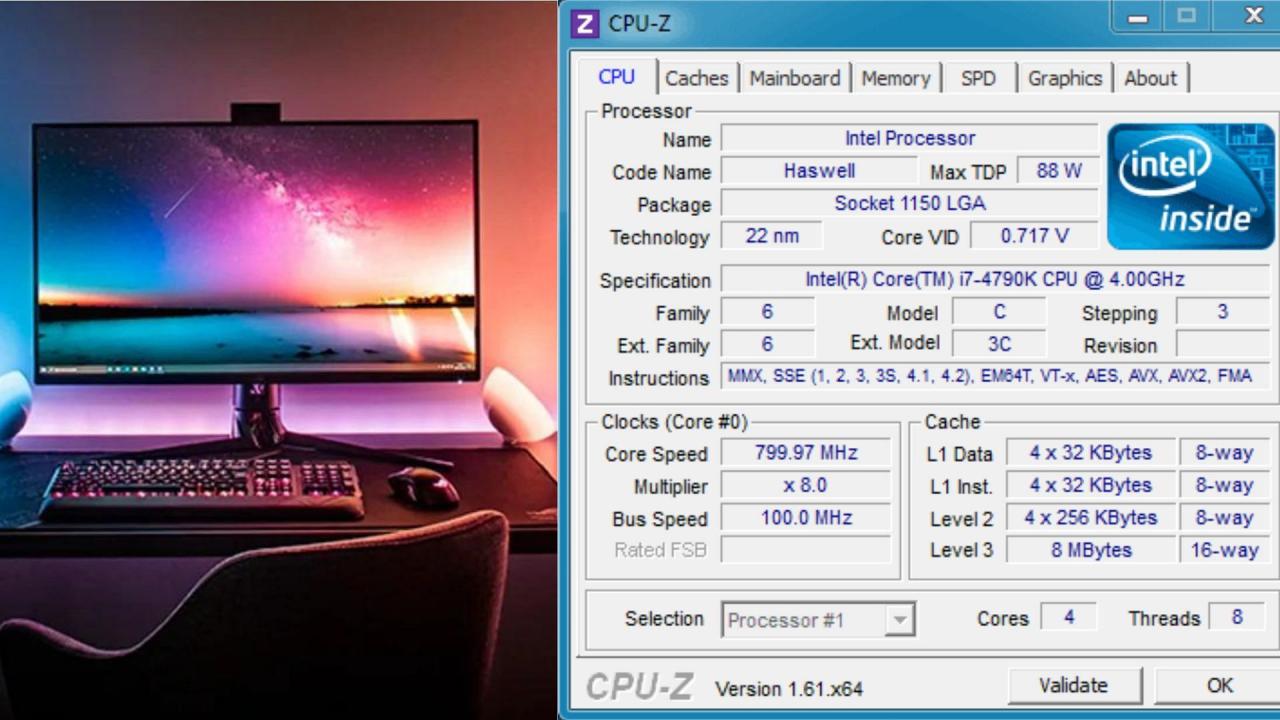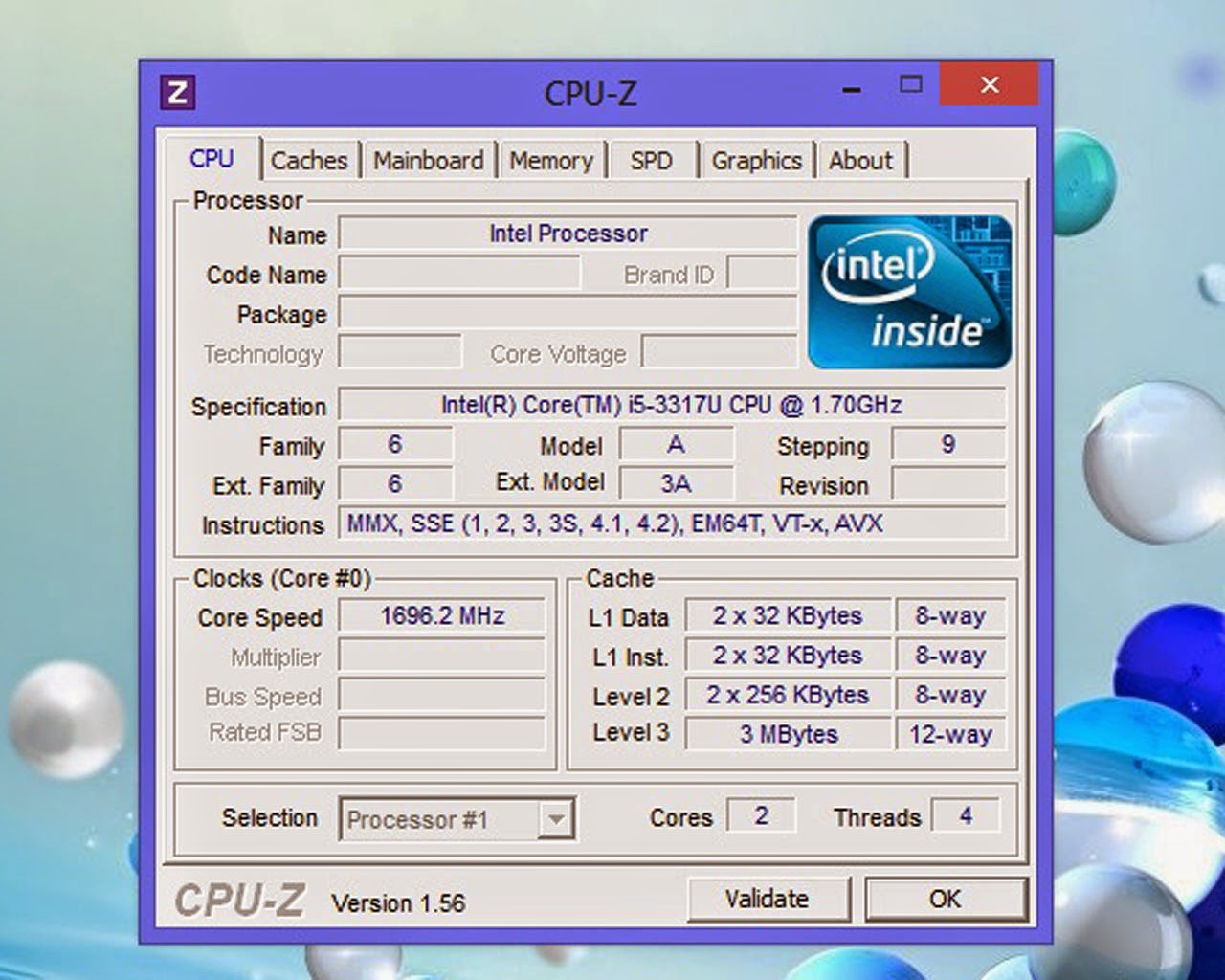Cpu z – CPU-Z is your go-to tool for quickly and easily understanding your computer’s hardware. This handy utility provides detailed information about your processor, memory, motherboard, and even your graphics card, all presented in a clear and accessible format. Whether you’re a seasoned tech enthusiast or a curious newcomer, CPU-Z empowers you to peek under the hood and see exactly what makes your PC tick.
From identifying compatible components to troubleshooting performance issues, CPU-Z is an invaluable resource. It simplifies complex hardware details, making it easy to understand specifications, compare systems, and diagnose problems. This guide will walk you through its key features and show you how to use it effectively.
CPU-Z: A Deep Dive into System Information: Cpu Z

CPU-Z is a free, lightweight, and widely-used utility that provides detailed information about your computer’s hardware components. It’s a go-to tool for anyone needing to understand the specifics of their CPU, RAM, motherboard, and graphics card. This guide will walk you through its key features, functionalities, and how to interpret the data it provides.
Introduction to CPU-Z

CPU-Z’s primary function is to display comprehensive information about your computer’s hardware components. This includes detailed specifications about your processor, memory modules, motherboard chipset, and graphics card. The target audience includes computer enthusiasts, system administrators, technicians, and anyone interested in understanding their computer’s internal workings. CPU-Z has been developed and maintained by CPUID since its initial release, continuously updated to support the latest hardware technologies.
Key Features and Information Displayed, Cpu z

CPU-Z organizes information into several key sections, each providing specific details. A comparison with other system information tools helps highlight CPU-Z’s strengths.
| Tool Name | CPU Information | RAM Information | Motherboard Information | Other Notable Features |
|---|---|---|---|---|
| CPU-Z | Detailed specifications, including model, clock speed, cache sizes, and stepping | Detailed specifications, including module size, speed, timings, and manufacturer | Chipset, manufacturer, BIOS version | Benchmarking, SPD information, Graphics card details |
| Speccy | Basic CPU information | Basic RAM information | Basic motherboard information | Temperature monitoring, overall system overview |
| HWiNFO | Very detailed CPU information, including sensor data | Very detailed RAM information, including timings and voltages | Extensive motherboard information | Sensor monitoring, detailed reporting options, extensive hardware support |
The CPU tab shows the processor’s model, core count, clock speeds, and cache information. The Cache tab details the different levels of cache memory. The Memory tab displays RAM information, including size, speed, and timings. The SPD tab provides detailed information about each RAM module. The Graphics tab shows details about the installed graphics card.
The Benchmarks tab allows for simple performance testing.
Understanding the data points requires some technical knowledge. For example, higher clock speeds generally indicate better performance, while larger cache sizes can improve application responsiveness. RAM timings affect performance, with lower numbers generally being better.
CPU-Z is a great tool for checking your computer’s specs, right? But sometimes you need to know the processing power of something else entirely. For example, if you’re considering buying a drone like the e88 drone , you might want to look into its flight controller’s processing capabilities. Then you can compare that to your desktop’s specs using CPU-Z, getting a clearer idea of the relative processing power.
Using CPU-Z for System Diagnostics
CPU-Z can be a valuable tool for identifying performance bottlenecks and troubleshooting hardware compatibility issues. A systematic approach is key.
To identify CPU bottlenecks, compare CPU usage percentage under load with the CPU’s maximum clock speed. Sustained high usage and lower-than-expected clock speeds could indicate a bottleneck. To troubleshoot hardware compatibility issues, cross-reference the reported components with the manufacturer’s specifications. Inconsistencies could indicate a compatibility problem. To compare system performance, record CPU-Z data from different hardware configurations and compare key metrics like clock speeds, RAM timings, and benchmark scores.
Advanced Features and Uses of CPU-Z
CPU-Z offers several advanced features beyond basic hardware identification. The SPD tab is crucial for verifying RAM specifications, ensuring compatibility and optimal performance. CPU temperature monitoring, available through some third-party tools used in conjunction with CPU-Z, helps identify potential overheating issues. High temperatures (above 90°C for most CPUs) indicate a problem that may require better cooling or addressing other potential issues.
The Graphics tab provides crucial information about the GPU.
- GPU Model
- GPU Clock Speed
- Memory Size and Type
- Shader Units
- DirectX and OpenGL Versions
Limitations and Alternatives to CPU-Z

While CPU-Z is excellent for basic hardware identification, it has limitations compared to more advanced tools. It lacks detailed sensor monitoring and advanced benchmarking capabilities.
CPU-Z is great for checking your computer’s specs, right? But did you know that powerful onboard processors are also crucial for things like drone remote start functionality? The processing power needed for a smooth, reliable remote connection is surprisingly high, much like what you’d see reflected in a detailed CPU-Z report. So, understanding your computer’s capabilities, as revealed by CPU-Z, can actually help you understand the limits of your drone tech too!
| Tool Name | Key Features | Strengths | Weaknesses |
|---|---|---|---|
| HWiNFO | Extensive hardware monitoring, detailed sensor data, advanced benchmarking | Comprehensive data, real-time monitoring | Steeper learning curve |
| AIDA64 | Comprehensive system information, stress testing, benchmarking | Very detailed information, powerful benchmarking | Paid software |
Alternative tools like HWiNFO or AIDA64 are preferable when detailed sensor data, stress testing, or advanced benchmarking are needed. CPU-Z might not be sufficient for in-depth diagnostics or performance analysis in those scenarios.
Illustrative Examples of CPU-Z Output
A typical CPU-Z report for a modern Intel processor would display the processor’s model number (e.g., Intel Core i7-12700K), core count, clock speeds (both base and boost), cache sizes (L2 and L3), and instruction set support. For an AMD processor, a report might show the processor model (e.g., AMD Ryzen 7 5800X), core count, clock speeds, cache sizes, and the specific architecture (e.g., Zen 3).
The key difference lies in the architecture and specific features reported; however, both provide essential information about core count, clock speeds, and cache sizes. The differences are largely in the specific details of the architecture and features supported.
Concluding Remarks
CPU-Z is more than just a system information tool; it’s a powerful diagnostic and comparative utility. Its simple interface belies its capability to provide critical details about your PC’s hardware, enabling you to make informed decisions about upgrades, troubleshooting, and performance optimization. By understanding how to interpret its data, you can gain a much deeper understanding of your computer’s capabilities and limitations.
So, download CPU-Z, explore its features, and unlock the secrets of your system!
Clarifying Questions
Is CPU-Z safe to use?
Yes, CPU-Z is a safe and reputable tool. It’s a lightweight application that doesn’t install any unnecessary software or modify system settings.
Does CPU-Z work on all operating systems?
CPU-Z is a handy tool for checking your PC’s specs, especially useful when you’re troubleshooting performance issues. If you’re building a new rig, though, head over to this awesome pc builder site to plan your components first. Then, once your system is up and running, CPU-Z will let you verify everything is installed correctly and performing as expected.
CPU-Z is available for Windows, macOS, Linux, and Android. Check the official website for the correct version for your OS.
How often should I run CPU-Z?
You can run CPU-Z whenever you need to check your system’s specifications or troubleshoot a problem. It’s not a program that needs to run constantly.
Can CPU-Z help me overclock my CPU?
CPU-Z itself doesn’t overclock your CPU. It provides information that can be useful when overclocking, showing your current CPU speed and temperatures.
